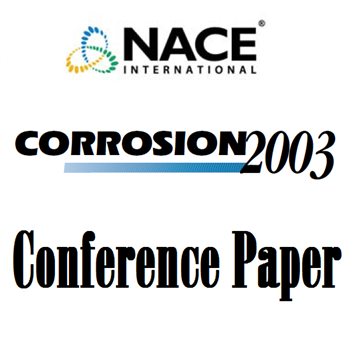Search
03055 Application of Thermodynamics to Testing Solvent Resistance of Tank Linings
Also Purchased
03054 COST EFFECTIVE ALTERNATIVES TO TANK LININGS FOR HANDLING CORROSIVE SOLUTIONS
Product Number:
51300-03054-SG
ISBN:
03054 2003 CP
$20.00
03065 WATER TREATMENT IN OIL SANDS: A NOVEL APPROACH TO CALCIUM CONTROL
Product Number:
51300-03065-SG
ISBN:
03065 2003 CP
$20.00
03058 100% Solids Tank Lining Systems Extended Coating Life Equals Dollars Saved
Product Number:
51300-03058-SG
ISBN:
03058 2003 CP
Publication Date:
2003
$20.00




